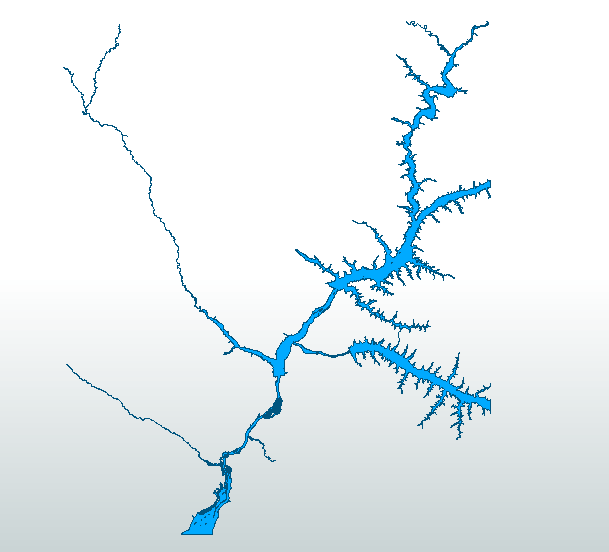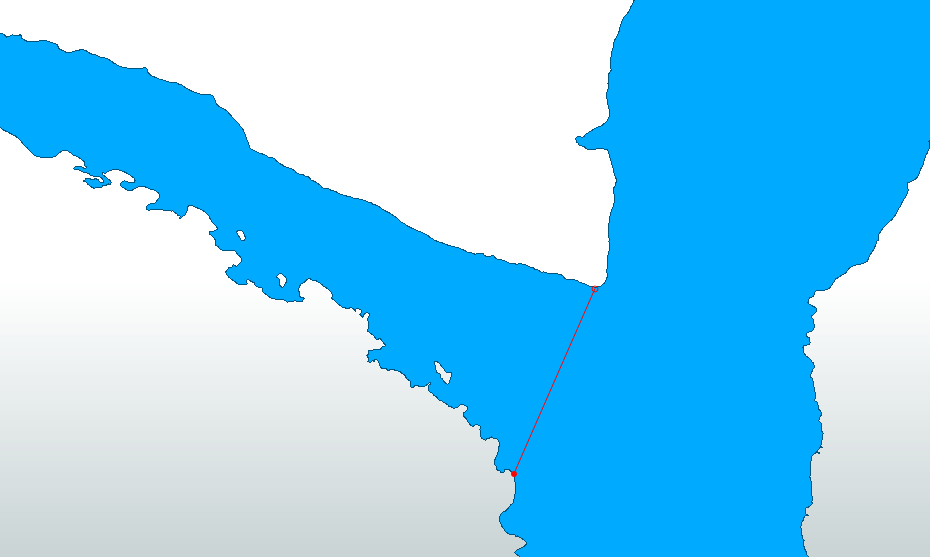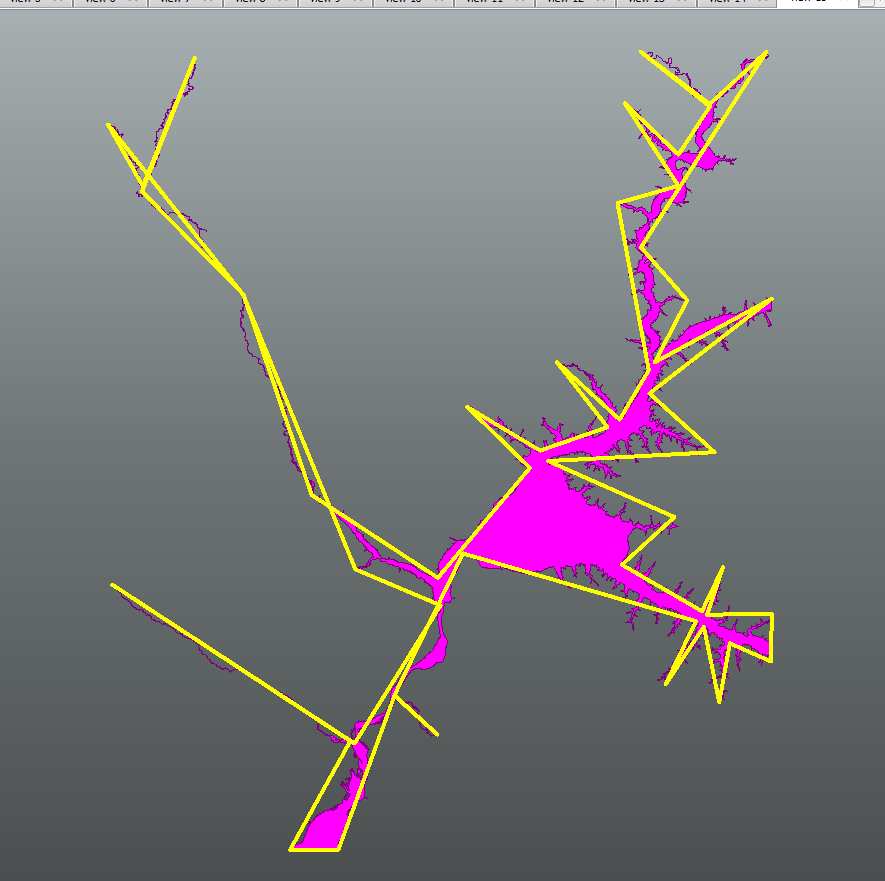Hello!
I have polygon geometry representing water areas obtained from satellite imagery. They are sometimes very large and include multiple rivers inside the same polygon. I would need to decompose/split those huge polygons into smaller ones in order to have one distinct polygon for each river. This is just one polygon:

I would need to identify the main tributaries and seperate them into distinct polygons. Tributaries would be cut from the main stem more or less according to the following dividing line:

I am still not sure how this could be automated given the very irregular nature of the polygon. I would also need to decide what a relevant tributary is (width of the junction and/or area upstream,...).
I have made some attempts at obtaining a sort of skeleton using the CenterLineReplacer transformer but it ends up with a crash even after generalization. I am also looking at whether it would be possible to have FME calculate the biggest inscribed convex polygons and use the result of these in order to derive a sort of dividing line between the major waterways. I did not find a transformer for that but if you think you see an approach for solving the problem, I would be very glad if you could share it with me.
I have attached the original polygon () in case you want to play around with it.
Thanks!
Olivier













